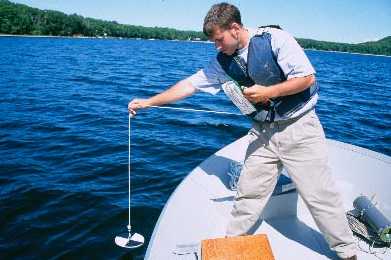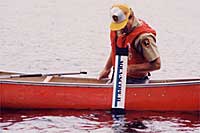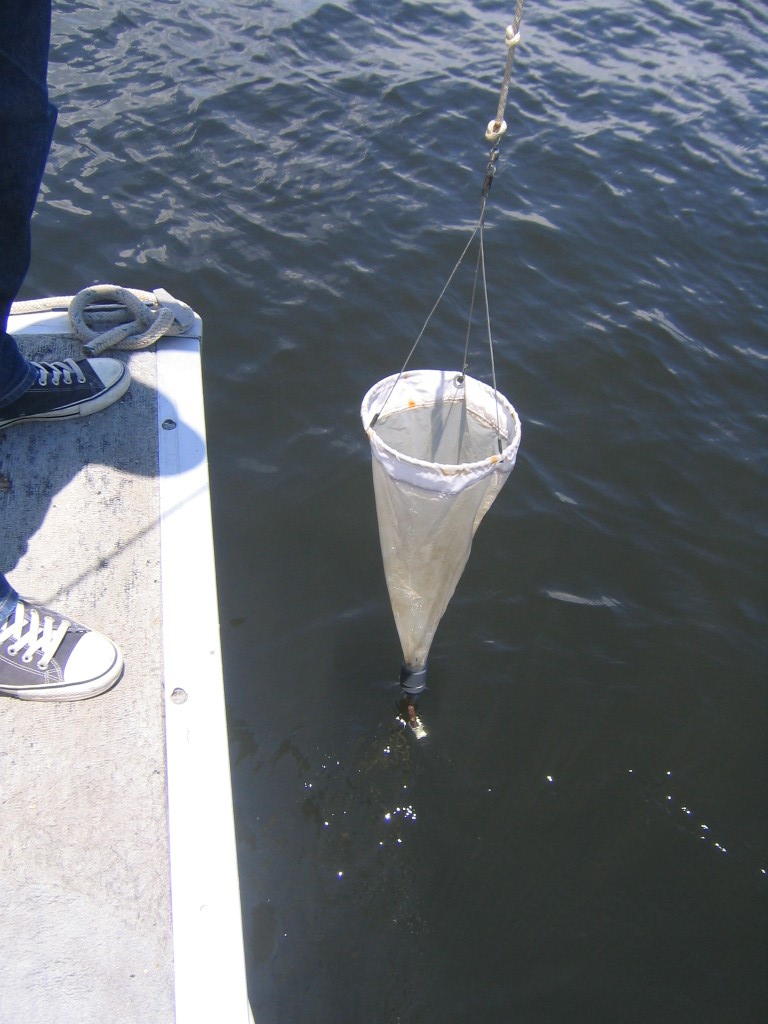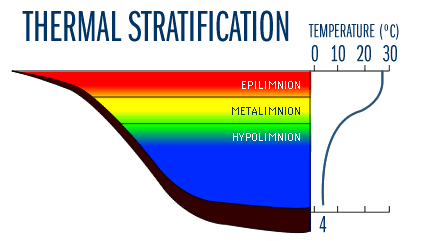

WEB RESOURCES FOR ACTIVITIES
ABOARD THE MELINDA ANN
(ver 06/29/11)
View a .pdf copy of, "Activities Aboard the Melinda Ann"
Download a .doc copy of, "Activities Aboard The Melinda Ann," for editing and printing
View a .pdf copy of, "a Student Log for the Melinda Ann"
Download a copy of, "a Student Log for the Melinda Ann"
WEB RESOURCES FOR MELINDA ANN ACTIVITIES
THE SECCHI DISC:


http://serc.carleton.edu/microbelife/research_methods/environ_sampling/turbidity.html presents good basic information on turbidity and how to use a Secchi Disc
http://en.wikipedia.org/wiki/Secchi_disk Wikipedia's more technical explanation
http://www.pca.state.mn.us/index.php/water/water-types-and-programs/surface-water/lakes/citizen-lake-monitoring-program/secchi-transparency-slideshow/secchi-transparency-slideshow.html?menuid=&redirect=1 check out the slide show of the Secchi Disc in different lakes
PLANKTON TOW:

Nice visual presentation of Great Lakes professional plankton tow including videos
http://www.cee.mtu.edu/great_lakes/images2/spotlight_plankton.htmlStandard method for a vertical plankton tow. http://files.dep.state.pa.us/Water/Drinking%20Water%20and%20Facility%20Regulation/WaterQualityPortalFiles/Methodology/planktonsampling_2009am.pdf
A few picture of common lake zooplankton
http://www.sfrc.ufl.edu/planktonweb/taxonomy.htmA pictorial guide to freshwater algae. http://silicasecchidisk.conncoll.edu/LucidKeys/Carolina_Key/html/Group_List.html
Photo gallery of dominant Great Lakes phytoplankton. http://www.glerl.noaa.gov/seagrant/GLWL/Algae/DominantAlgae.html
U. of Vermont's Pictorial Guide to algae. http://www.lcbp.org/PDFs/Phytoplankton-Pictorial-ID.pdf
A TEMPERATURE PROFILE:

Why is lake temperature important? http://www.lakeaccess.org/russ/temperature.htm
A good description of the causes of thermal stratification in lakes. Includes reverse stratification under ice.
Uses degrees Celsius only. 4 Celsius = 39 degrees Fahrenheit.
http://faculty.gvsu.edu/videticp/stratification.htmA good lab activity for kids or adults after the data has been collected.
http://www.waterontheweb.org/curricula/bs/teacher/thermal/teaching.htmlA very good description for the more technically inclined. (assumes some background in science).
http://www.esf.edu/efb/schulz/Limnology/mixing.html
A BENTHIC SAMPLE TAKEN WITH A DREDGE
Benthic Invertebrate stuff:
Wonderful, Wacky Water Critters a .pdf guide to the kinds of bottom crawlies found in rivers and ponds. (University of Wisconsin Extension Service) http://learningstore.uwex.edu/Assets/pdfs/GWQ023.pdf
The following good keys from the University of Wisconsin extension service are recommended for kids and adults.
- Macro invertebrate Life in the River: http://watermonitoring.uwex.edu/pdf/level1/riverkey.pdf
- Key to Life in the Pond: http://watermonitoring.uwex.edu/pdf/level1/pondkey.pdf
USING THE REMOTELY OPERATED VEHICLE (ROV):
Video of a home-made ROV in McDonald Lake http://www.youtube.com/watch?v=49PYiPV4XZA
90 feet at Walden Pond, MA. Note color of bottom. http://www.youtube.com/watch?v=p5iS6VzG-VY&feature=related
Novice?
Check out the RMB lake primer at http://www.rmbel.info/Reports/Static/Overview.aspx